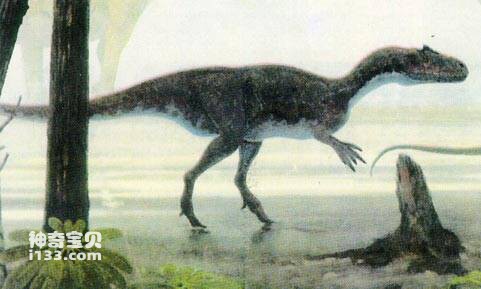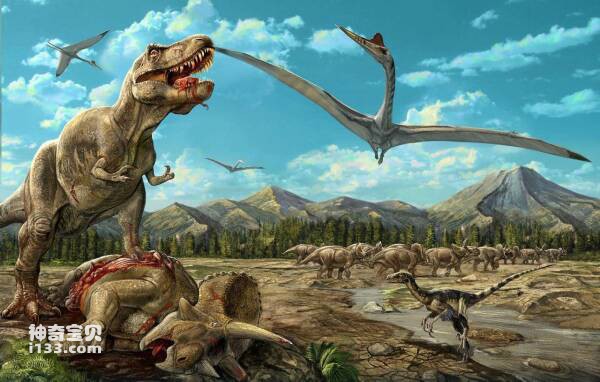In 1993, some paleontologists in the United States discovered the complete fossil skeleton of a carnivorous dinosaur in the Sahara Desert of Niger, an African country, and called it the "African Hunter." The "African Hunter" is nearly 10 meters long, with a long skull, powerful forelimbs, sharp bendable claws and a strong long tail. The "African Hunter" is very similar to the Lepidosaurus that flourished in the American West during the late Jurassic.

"African Hunter"
Along with the "African Hunter", several sauropods were also discovered in the same area. The teeth of this sauropod were broad, spatula-shaped. They are very similar to the atoposaurs that flourished in western North America during the late Jurassic.
A question suddenly flashed in the minds of paleontologists: How could dinosaurs with such close genetic relationships be found in Africa and North America, which are tens of thousands of kilometers apart?
At first, the evolutionary connection between dinosaurs on the African continent and those in western North America really seemed incredible to paleontologists, but they soon found a reasonable explanation, which is continental drift.

The possible scenario is that in the late Jurassic about 150 million years ago, although Pangea had begun to break up at that time, the southern continent including modern Africa (Gondwana) soon began to drift. ) and the northern continent (Laurasia) including modern North America and Europe have not yet been completely separated. In what is now Europe's Gibraltar region, there is a land bridge connected to the African continent, allowing dinosaurs on the two ancient continents to communicate with each other. At that time, Europe and North America were connected, so it is not surprising that there are dinosaur groups that are very closely related to North America and Africa.
Later, in the early Cretaceous, Gondwana and Laurasia further separated and drifted. Africa was completely isolated from Laurasia in the north, and gradually became separated from other landmasses of Gondwana itself. For example, South America is separated and truly becomes an island continent. Since then, African dinosaurs have evolved in their own unique directions.
animal tags:
We created this article in conjunction with AI technology, then made sure it was fact-checked and edited by a Animals Top editor.